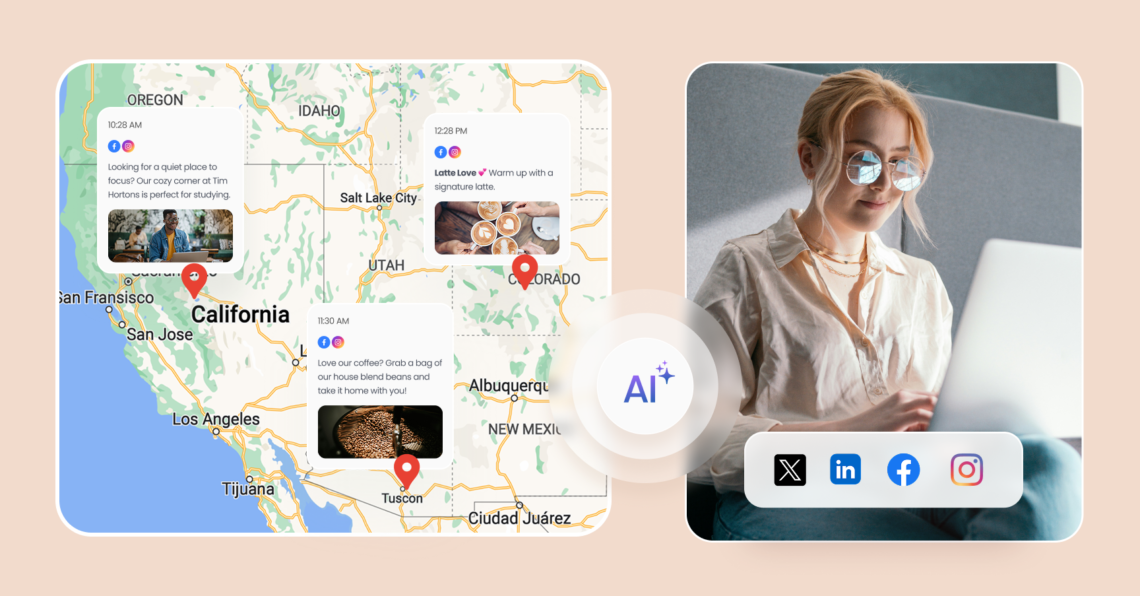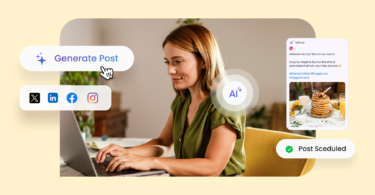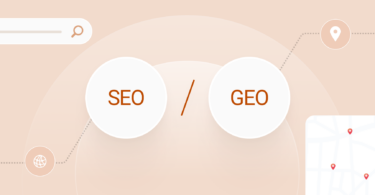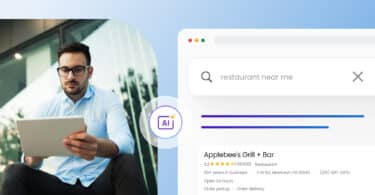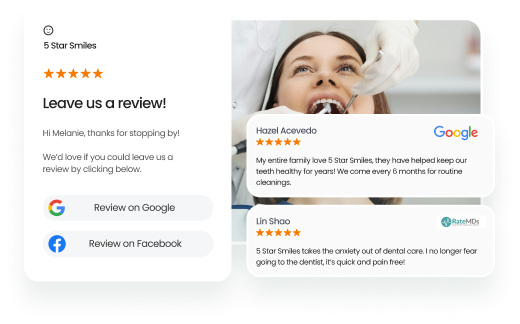Customers are engaging more with brands at the local level. They want updates that feel relevant to where they live, who they interact with, and what matters in their community.
Summary
The Birdeye State of Social 2026 Report shows that consumers now engage more with brands at the local level, not through national corporate feeds. For multi-location enterprise businesses, this creates a key challenge: maintaining a consistent brand voice while also allowing each location to speak authentically to its community. Hyperlocal personalization helps close this gap by tailoring content to local needs, culture, and conversations. This blog explains why hyperlocal content drives stronger engagement, how the hub-and-spoke model supports both governance and flexibility, and how AI tools like Birdeye Social AI enable enterprises to scale relevance across every location without losing control.
To understand how to apply this approach, let’s start with what hyperlocal personalization actually means in practice.
Table of contents
- Summary
- What is hyperlocal personalization?
- The engagement and relevance gap: Why local pages outperform national feeds
- The hub-and-spoke model: Scaling local relevance without losing control
- Why going local still feels risky to some brands
- What audiences respond to on local social pages
- The future of local social: AI, geo-personalization, and micro-communities
- FAQs
- How Birdeye helps you speak to customers without losing the brand voice
What is hyperlocal personalization?
Hyperlocal personalization is the practice of tailoring social content, messaging, and offers to specific communities rather than pushing the same message everywhere. It focuses on connecting with people where they live, both digitally and physically, by reflecting their local culture, preferences, and day-to-day realities.
At its core, proximity creates connection. Hyperlocal personalization turns social media from a broadcast channel into a relationship builder.
Why Hyperlocal works
- Localized content feels authentic and relevant, driving higher engagement and trust.
- Social algorithms boost posts tied to neighborhood events or cultural cues.
- According to Google, 3 in 4 smartphone users engage more with location-based content, and “near me” searches have surged over 200%.
For example, a national fitness brand might highlight outdoor yoga sessions in San Diego but share indoor training tips in Minneapolis. Both posts carry the same brand voice but feel naturally tailored to their respective audiences.
Despite its advantages, few enterprises achieve this level of consistency across markets. The real challenge lies in building systems that allow local variation without losing brand alignment.
The engagement and relevance gap: Why local pages outperform national feeds
Local pages outperform national feeds because they connect on a personal level. According to Birdeye’s State of Social 2026 Report, 57% of consumers prefer following local or regional brand pages because they feel more relevant, authentic, and community-driven.

A polished corporate feed might look impressive, but it often misses local context—the stories, people, and events that actually drive engagement.
Why audiences unfollow brands
When social is managed from a single central account, relevance fades quickly. Generic posts, offers that don’t apply locally, or content that feels “copy-pasted” cause engagement to drop quickly.
Customers unfollow for a few simple, fixable reasons:

- Posts look repetitive across markets
- Updates feel promotional or irrelevant
- Tone and visuals vary inconsistently
- There’s no local voice or response
These are not creative problems. They are operational challenges caused by running all social activity through a single centralized channel.
Why this matters for enterprise brands
For multi-location organizations, this isn’t just a content issue—it’s a strategic decision. Local pages deliver measurable business value because they:
- Strengthen community ties with familiar stories and staff highlights
- Improve discoverability in regional search and local algorithms
- Drive higher engagement by matching local intent and context
The solution isn’t to abandon brand control. It’s to create a structure that supports both centralized guidance and local relevance. That’s where the hub-and-spoke model comes in.
The hub-and-spoke model: Scaling local relevance without losing control
To manage local engagement effectively, leading brands are adopting the hub-and-spoke model, a structure that balances brand control with authentic local expression.
How the model works
- In this setup, the hub — your corporate or headquarters team — owns the overall brand strategy, tone, and creative standards. It defines the messaging framework, provides shared assets, and ensures quality control.
- The spokes — your local teams or regional pages — use those assets to adapt content for their specific audiences. They personalize visuals, hashtags, and captions to fit local context, ensuring every post feels relevant without losing alignment.
For example, a healthcare network with 100 clinics can run a unified national campaign around preventive health while each local clinic shares staff highlights or community events that connect with local audiences.
Why it’s essential for scaling a business
Birdeye data shows that nearly 70% of barriers to local marketing adoption are operational rather than strategic. A clear hub-and-spoke model fixes this by defining ownership, maintaining oversight, and giving local teams the freedom to sound authentic.

Operational efficiency is what makes the hub-and-spoke model successful. Central teams need the right systems to manage creative assets, approvals, and analytics while empowering local teams to post confidently and stay on brand.
Once your hub-and-spoke structure is in place, the next challenge is scale: how to manage hundreds of pages efficiently and keep them active without overwhelming your teams.
Why going local still feels risky to some brands
Even with a clear strategy and structure, many marketing leaders still hesitate to launch local pages. The concern isn’t about potential; it’s about control and capacity.
According to Birdeye’s State of Social 2026 Report, most challenges stem not from strategy but from bandwidth and oversight. Many marketing leaders worry about off-brand tone, inconsistent visuals, and the effort required to manage dozens or hundreds of pages. These are valid concerns, but structure and automation can eliminate most of them.
Where the real bottlenecks are
The biggest slowdowns happen in operations: handling content volume, approvals, and collaboration across markets. And when you’re responsible for 100 locations, the workload quickly becomes unmanageable.

Common hurdles include:
- Creating local content that fits brand guidelines
- Reviewing and approving multiple post variations
- Coordinating feedback between HQ and local teams
- Tracking performance across countless profiles
These gaps lead to delays, duplicate work, and missed engagement opportunities.
The solution: How structure and AI solve it
High-performing brands build frameworks that combine centralized oversight with local autonomy.
What that looks like in practice
- Central brand hub: Store brand-approved templates, creative assets in one shared library
- Defined workflows: Set clear approval paths and permissions to prevent off-brand posts
- Localized automation: Use tools like Birdeye Social AI to auto-generate captions, tailor hashtags, and optimize posting times
- Unified analytics: Aggregate insights across all pages so local data fuels enterprise strategy.
AI doesn’t replace the human touch; it amplifies it. With Birdeye Social AI, teams can plan, schedule, and personalize posts for every location from one dashboard, reducing turnaround time from days to minutes.
From manual effort to scalable authenticity
When structure meets automation, scale becomes sustainable. AI manages the repetitive work; local teams focus on storytelling and engagement. The result: hundreds of pages that sound consistent, authentic, and active, no matter how many locations your brand has.
What audiences respond to on local social pages
Once the right structure is in place, the next question is: what kind of content actually earns engagement and loyalty on local social pages?
Customers no longer connect with generic, one-size-fits-all campaigns. They prefer content that reflects their community, showcases real people, and mirrors their everyday experiences.
What works on local pages
The top reason consumers follow local brand pages is relevance. People want to see what’s happening in their neighborhood and not a generic national update that feels irrelevant. Posts that are human, useful, and timely consistently outperform overly produced corporate content.
Here’s what drives the most engagement on local pages:
- Localized offers and updates that are specific to the community’s needs
- Familiar faces, like staff highlights or customer shoutouts
- Behind-the-scenes moments that make brands approachable
- Real-time posts about events, weather, or local initiatives

Some of the highest-performing posts are simple moments —behind-the-counter clips, shoutouts to loyal customers, or “Hey Boston, we’re opening early today!” updates. These human touches make big brands feel local, credible, and human.
Why local outperforms national content
Customers are far more likely to engage with a business that celebrates their community than one that only promotes products.
The data backs this up:
- According to McKinsey & Company, brands that personalize effectively can deliver 5-8x the ROI on marketing spend and boost sales by over 10%.
- A Meta Business study showed that location-targeted creative can outperform generic national ads by up to 2X in conversion and click-through rates.
Finding the right content balance
Enterprise brands can follow an 80/20 formula:
- 80% practical: Service updates, local offers, and relevant information
- 20% personal: Employee highlights, customer stories, and community involvement

For example, a national dental brand might post a corporate message about “Oral Health Month.” Local offices can adapt that campaign by featuring their hygienists offering quick tips, celebrating patient milestones, or supporting a nearby school event. The core message remains consistent, but the delivery feels authentic and local.
The takeaway
Audiences tune out when content feels irrelevant or overly branded. But when each page sounds like it belongs to its community, engagement grows naturally.
Delivering this authenticity across hundreds of locations may seem complex, but with AI-driven tools, personalization at scale becomes not just possible, but repeatable.
The future of local social: AI, geo-personalization, and micro-communities
Social media is entering its next phase, one defined by location intelligence and community connection. Consumers now expect content that adapts not only to their interests but also to their location, timing, and context,
From personalization to geo-personalization
Traditional personalization isn’t enough anymore. The next phase is geo-personalization, where AI adapts posts, visuals, and offers based on geography, cultural nuances, and real-time local behavior.
Imagine:
- A fitness brand’s social feed automatically promotes outdoor workouts in warm weather.
- A retailer showcasing products currently in stock at the nearest store.
This creates a dynamic, responsive brand presence that feels timely, human, and relevant. In this model, authenticity matters more than reach. People engage with brands that contribute meaningfully to their local conversations. The brands that nurture these community-level interactions build stronger trust, deeper loyalty, and measurable engagement.
What this means for enterprise brands
To thrive in this new phase, enterprises must combine AI-driven efficiency with local empathy.
What works:
- Geo-personalization tools to tailor messaging by region, season, or behavior patterns
- Two-way engagement so each page feels like part of the community
- Insight loops that allow local performance to inform national strategy
Action plan for 2026 and beyond:
- Industrialize content production with an anchor piece repackaged daily.
- Route all social messaging into a centralized inbox to improve response time SLAs.
- Launch or strengthen local pages with templates, AI copy prompts, one-click approvals, and small local budgets.
FAQs
Local pages make sense when the location has its own customer base, staff identity, or community footprint. Suppose people refer to the brand by neighborhood or city name in reviews, conversations, or search (“the downtown location,” “the Plano branch”). In that case, that’s a signal that a separate local presence will perform better than a single national feed.
Yes. The central brand defines vocabulary, tone, and visual standards. Local teams personalize these elements to match their community. When the hub provides templates and tone guidance, local content sounds authentic while remaining aligned with the brand’s identity.
Start with locations that have strong community identity, active local events, or a visible staff presence. Look at search trends, in-store foot traffic patterns, review volume, and local competitor activity. If the community already talks about the brand locally, that location will benefit from a dedicated social presence.
Useful indicators include comment sentiment, repeat interactions from familiar names, response time, and local post click-throughs. When metrics reveal more conversations and positive recognition from community members, the pages are working.
Use AI to generate caption drafts, suggest local hashtags, identify trending topics, repurpose brand campaigns for local markets, and schedule posts for optimal times. Local teams should always add final context and a human tone to keep the message personal.
You keep consistency but lose relevance. Feeds look correct, but they don’t connect. Over time, performance declines even if the visuals stay polished. The cost is audience attention, not brand compliance.
How Birdeye helps you speak to customers without losing the brand voice
Your customers don’t care about your social media governance model. They care about whether your store is open during a holiday, if the event down the street was great, or whether you remembered their neighborhood fundraiser.
And that’s the big shift: people expect brands to sound local, act relevant, and respond fast.
That doesn’t mean giving up control. It means building systems that empower relevance without compromising your brand voice.
With the right tools, like Birdeye Social AI, you can finally unlock social at scale. Not just louder. But smarter, more personalized, and undeniably local.
With Birdeye Social AI, brands can:
- Store all creative assets, logos, and templates in one centralized library
- Generate on-brand captions tailored to each location automatically
- Maintain tone and quality through built-in approval flows
- Optimize posting times and formats based on local engagement trends
Because at the end of the day, if you’re managing social for 10, 100, or 1,000 locations, the game isn’t about choosing central or local, it’s about building a system that lets both work together. With tools like Birdeye Social AI, that system is more achievable than ever.

Originally published
